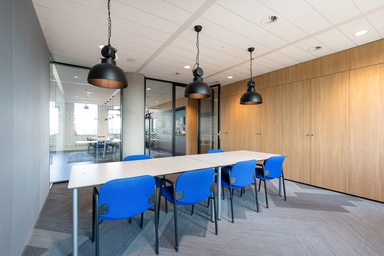
Office Leasing in Europe: Where Are Companies' Decisions Heading?

The office space market in Europe is undergoing significant changes. A combination of weak economic growth, uncertainty, and constantly evolving hybrid work models is making it increasingly difficult for companies to predict their future space requirements.
How is this reflected in concrete decisions? A survey conducted by CBRE, which analyzed 840 business cases in the second half of 2024, offers some interesting insights.
Companies Most Often Relocate Within the Same City
Almost 50% of all leasing transactions during the observed period involved relocations within the same city. In doing so, companies optimize their portfolios without changing location, maintaining continuity while improving the quality of their office space.
A strong emphasis on such relocations is especially evident in the legal and media services sectors, which together accounted for 64% of all intra-city moves. Another 31% consisted of lease renewals, often under revised terms — whether related to rent, space size, or lease duration. Completely new market entries ("new-to-market" leases) made up 11% of the cases. (Figure 1)
Figure 1: Types of Transactions, Closed Deals, H2 2024
.png?m=1754482591)
Building Quality and Location as Top Priorities
The two most important criteria currently influencing tenant decisions are the quality of the building itself and its location. Together, these factors accounted for 40% of all decisions.
Companies recognize that high-quality, well-located offices enhance their attractiveness to employees and support the return to the workplace. While these solutions are often more expensive, the expected benefits outweigh the higher operating costs. However, in the financial and professional services sectors, pressure for efficiency and cost reduction continues to play a significant role.
Figure 2: Key Transaction Drivers, Closed Deals, H2 2024
.png?m=1752785195)
Return to the City Center: Companies Leaving the Periphery
The focus on quality is also reflected in where companies are relocating. In most cases, this involves moving from peripheral areas to central or broader central business districts (CBDs). Over 75% of all intra-city relocations follow a clear direction: from the outskirts toward the center. The main drivers include better accessibility, public amenities, the image of the location, and overall employee comfort.
Figure 3: Company Movements Between Locations, H2 2024
.png?m=1754482591)
Office Size: More Change Than Stability
Interestingly, in two-thirds of cases, the size of the leased space also changed — though not always in the same direction. Some companies are growing, while others are reducing their footprint.
- Law firms, media companies, and consultancies are the most likely to expand.
- The financial sector and biotech companies tend to contract more often.
- Only one-third of transactions involved no change in space size.
This highlights that companies are placing strong emphasis on “rightsizing” — adjusting office space to fit their new ways of working.
Figure 4: Changes in Office Size, Closed Deals, H2 2024
.png?m=1754482591)
Office Leasing Increasingly About Quality, Flexibility, and Prime Locations
From the perspective of companies, office leasing is no longer just about price or square meters. It has become a strategic decision that considers the quality of the space, the attractiveness of the location, and the ability to adapt to evolving work needs.
Today’s leasing transactions most commonly reflect:
-
relocations within the same city, often closer to the center,
-
a focus on modern, well-equipped office spaces,
-
flexibility in size, tailored to work models and team dynamics.
Even though year-over-year leasing volume growth is modest, it clearly shows that companies are aiming to tailor their offices precisely to their people and future challenges.

